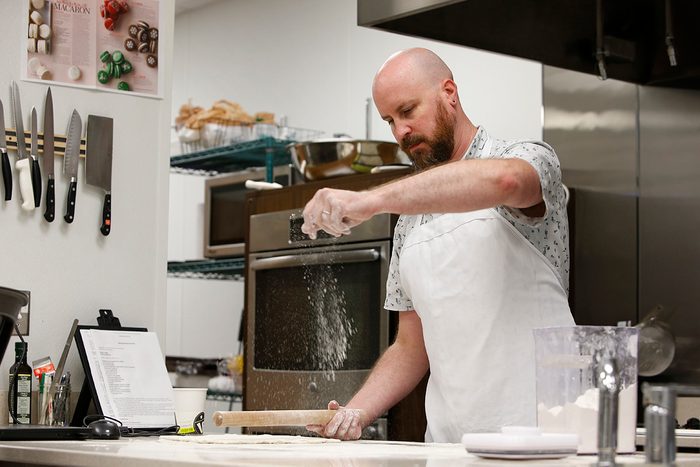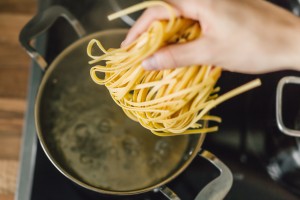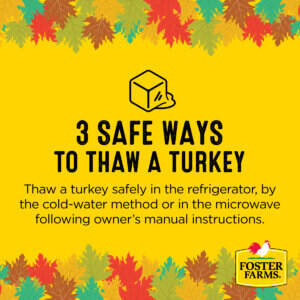
You can make sure your kitchen is safe by following a few simple steps. Besides the usual safety precautions like avoiding extension cords, not buying appliances that are broken and turning pot handles inward, you should also be aware of the potential hazards in the kitchen. These could include electrical fires and choking hazards. You can find more information about safety in the kitchen by reading on. These are the best:
Fire hazards
The kitchen is one of the most dangerous places in the house. There are many kitchen hazards that can cause serious injury. Although most kitchen accidents can be avoided some may prove to be fatal. You can avoid most kitchen accidents with just a few basic precautions. You should seek immediate medical attention if there is any injury. Even if your injury appears minor, you could have an internal injury that will not be apparent for days.
Electric fires
Although electric fires in kitchens can sometimes be unpredictable, there are basic safety precautions that can prevent them from causing damage. Avoid overloading an electrical outlet and avoiding overusing liquids or water near heat-generating appliances. You should unplug appliances not intended to be used in conjunction with water or other liquids. It is important to avoid overloading outlets. This can lead to dangerous situations, and can even cause trip breaker.

Stoves
A major factor that contributes to house fires is leaving something unattended on a kitchen stove. Sometimes people forget to check on their kitchen stoves while they're out and about or just for a quick break. Place a timer on the stove to make sure nothing is left near it, and don't leave anything flammable around. Potholders are essential to catch any packaging falling on the stove.
Choking hazards
The dangers of choking in the kitchen are numerous. Even small objects, children can choke on anything. Parents need to be extra vigilant about their children's safety. Check behind couches, under furniture and any other places where children might reach. To prevent choking hazards, parents must also be familiar with CPR and keep an emergency phone close by. To prevent choking in the kitchen, parents should childproof their cabinets and drawers. Children should be supervised when eating, and foods should be cut into half-inch pieces.
Cross-contamination
Cross-contamination of food in the kitchen is a very common problem. Cross-contamination of equipment can lead to dangerous bacteria in food. Cross-contamination can occur whether the machine is being used for cutting meat or to make glassware. A meat slicer that was used to cut meat was infected as listeria in 2008. Cross-contamination is possible in some cases. However, there are still a few steps you should take to prevent cross-contamination in your kitchen.

Hand washing
Hand washing is an integral part of food safety. Food safety requires employees to wash their hands frequently and often. It requires extensive training and proper installation of hand washing stations. Proper handwashing can dramatically reduce cross-contamination, and help to create safer environments for food production. Hand washing is essential for food processing plants' safety and health. This should be stressed in training and displayed prominently at the site. Hand-washing will produce cleaner, more nutritious products.
FAQ
How do you store leftovers best?
Leftovers are usually stored in Tupperware containers. These containers keep foods fresh and prevent odors from forming. They also keep foods warm longer. Frozen leftovers can be kept in freezer bags. When freezing food, place the bag inside another freezer bag so that air doesn't escape. Once the food is frozen place it in an airtight container, such as a zip lock bag.
Where can you buy high quality kitchen equipment
Online shopping is a great way to purchase quality kitchen equipment. Many websites offer all types of kitchen equipment for purchase. Before you purchase any kitchen equipment, ensure that you have read all reviews and rated it before buying. You can ask others who have the same items for their recommendations.
How long does it take to become chef? What Is the Average Career Path?
Becoming a chef takes approximately five years. You will learn basic cooking techniques, and get experience as a chef assistant. When you finish your training, you can apply for positions as a line cook, sous chef, or executive chef. The average salary for a chef ranges from $25,000 to $60,000 per year.
Where can I find online cooking classes for free?
Many websites provide free cooking lessons. YouTube is a great place to search for cooking videos. You can access thousands of recipes from some websites. You will need to pay a monthly subscription, but you can still try the site for free for 30 day.
What are the advantages of using a slow cooker to cook?
Slow cookers can be very helpful because you can prepare delicious meals quickly. Slow cooker recipes often have a lower oil and fat content than traditional recipes. Slow cooker recipes are also convenient as they can take care of themselves while your sleep.
Do I require any special equipment?
It doesn't take any special equipment or tools to learn to cook. However, the right tools can make it easier to cook. For example, you could use a knife instead of a fork to eat pasta or a whisk instead of a hand mixer to whip egg whites into stiff peaks. Having the right tools can make cooking less daunting and allow you to get started faster.
Can I learn to cook alongside my kids?
Yes! Children love to help in the kitchen. It's fun and teaches kids responsibility as well as teamwork. Children can help in everything, from washing vegetables and cutting onions. If your children follow safe practices when handling knives, they will enjoy helping you cook.
Statistics
- In the United States, the category is estimated at $23.2 billion annually and is growing faster than the market. (washingtonpost.com)
- The median pay for a chef or head cook is $53,380 per year or $25.66/hour, according to the U.S. Bureau of Labor Statistics (BLS). (learnhowtobecome.org)
- You'll be amazed that over 90% of CIA students receive scholarships and grants to finish their culinary studies. (ischoolconnect.com)
External Links
How To
How to Become a Chef
The career of chef is one of most rewarding. You will need to have a lot of skills and knowledge in order to choose the right job for you. There are many opportunities to begin working right away if this is your goal. You can either work at restaurants, hotels, catering companies, or even take up cooking classes. To make the decision easier, we've prepared some useful tips on becoming a chef.
-
Cook! Everybody should learn to cook once in their lifetime. It doesn't matter if your knowledge of food is limited, you can learn how to make it. Many recipes can be found online, and many are easy to follow. You should not rush learning new skills. Take it slow and enjoy each step.
-
Earn a degree
If your goal is to be a professional chef you should pursue a culinary arts degree. You'll be able develop your personal style and taste, while also learning valuable information. Culinary schools offer courses like baking, pastry-making, meat cutting, etc. Students are required to stay in class for several years before graduating. You should consider carefully before you choose any school if you want to be a chef.
-
Work in a restaurant
Working in a restaurant is probably the easiest way to enter the world of chefs. This is the best way to get practical experience before you decide to become a chef. Restaurants want qualified staff, especially if they have had experience in other fields. So if you want to become a chef without formal education, you should look for restaurant jobs.